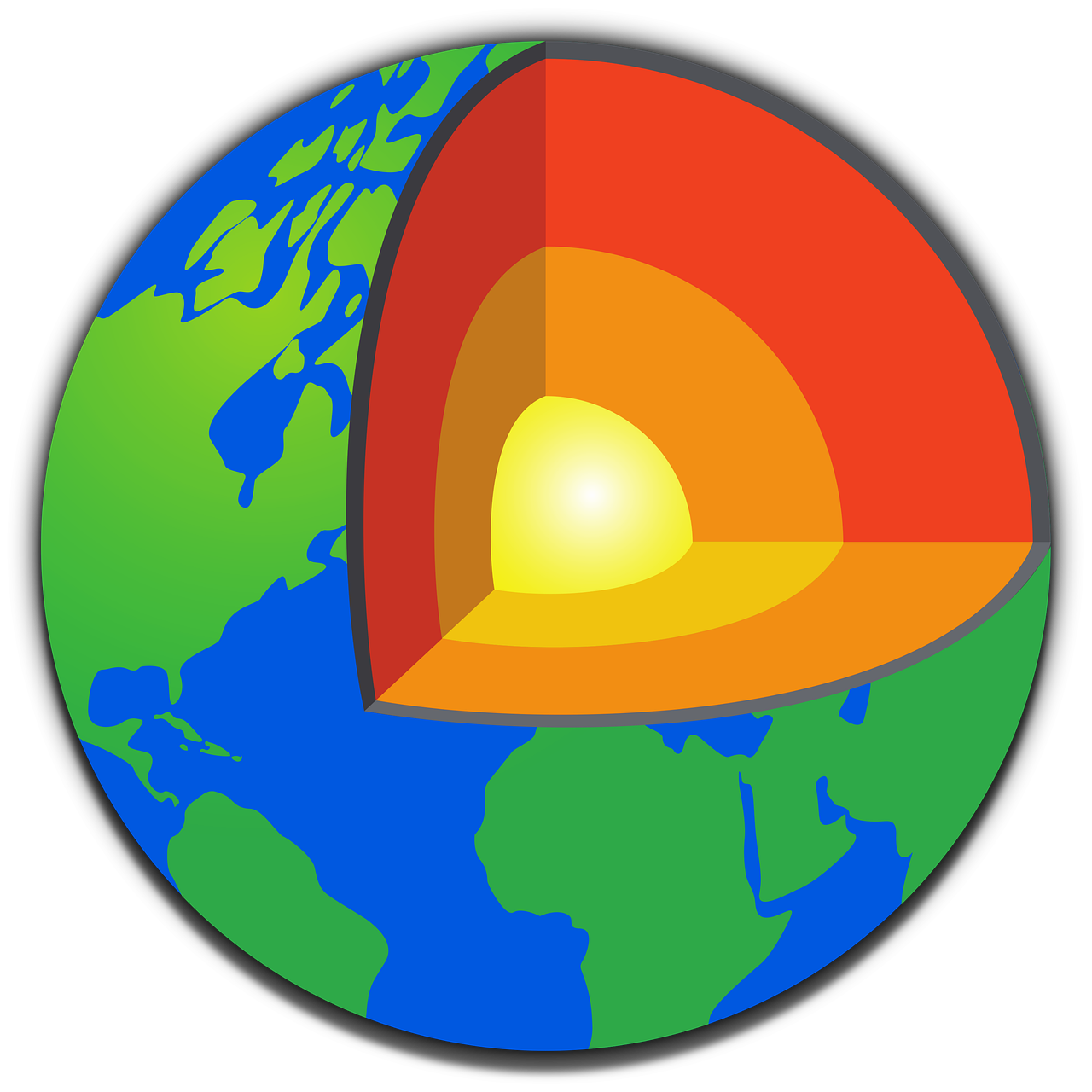The earth’s atmosphere is the layer of gasses, commonly known as air, that surrounds the Earth and is possessed by gravity of earth. The climate on Earth is life-supporting by penetrating UV solar radiation, warming the surface through heat absorption (greenhouse effect), and reducing temperature rise during day and night. On average, the atmosphere is a mixture of nitrogen (78%), oxygen (21%), argon (0.93%), carbon dioxide (0.04%) and other gasses. The atmosphere protects life on Earth by controlling pressure, allowing liquid water to exist on the surface and preventing ultraviolet solar radiation from entering the Earth.
Layers Of Earth
The atmosphere of Earth has five main layers inlcuding the troposphere, stratosphere, mesosphere, thermosphere and exosphere. The lowest layer, closest to the surface, is the troposphere. This layer reaches a height of about 15k m (9 mi) at the poles in winter and 10 km (6 mi) at the equator in summer.
Troposphere
The troposphere, known as the lowest layer of Earth’s atmosphere, has approximately 80.1% of the atmosphere’s mass and 99.1% of its water vapor and aerosols. The troposphere is the layer of the Earth’s atmosphere that begins at the surface and extends to approximately 20 km above sea level. It contains about 80% of the mass of our atmosphere.
The first layer, or troposphere, is where we live. It extends from Earth’s surface up to around 7 miles (11 kilometers) high. On a nice day when you can smell bacon and eggs grilling, your nose is about 5 miles (8 kilometers) from Earth’s surface; you can feel these smells because they rise only about 1 mile into that lowest layer of atmosphere. Water vapor condenses at higher altitudes in our planet’s middle layer, called the stratosphere. In fact, if you could look down on Earth from space during a rainstorm, you would see water droplets forming in giant clouds called rain-belts. These belts move up and down with each passing weather system—and sometimes even cross oceans!
Stratosphere
The stratosphere layer is among the five layers of Earth’s atmosphere. It sits between 18 and 50 miles above the planet’s surface, with temperatures ranging from about -76 degrees Fahrenheit to about 10 degrees Fahrenheit. The stratospheric layer accounts for only a tiny portion of Earth’s overall atmosphere mass, but it contains most of its ozone.
Mesosphere
The mesosphere lies next to the stratosphere and below the thermosphere. It is also referred to as the middle atmosphere. The mesosphere has a thickness of around 50–85 km (31–53 mi) in the tropics, but only about 10–30 km (6–19 mi) at the poles. This layer is responsible for most meteors burning up upon entering the Earth’s boundary.
Thermosphere
The thermosphere is the layer of the atmosphere that stays above the mesosphere. It extends from about 75 km above the Earth’s surface to about 500 km. The temperature of this layer decreases with a height from about 1,000 °C at the bottom to about −150 °C at the top.
Exosphere
The exosphere is the fifth and outermost lining of Earth’s atmosphere. It extends from the top of the mesosphere to about 10,000 km above sea level. Its lower boundary, which varies with height, is called the exobase. The upper limit (the top of the exosphere) is not explicitly defined; however, it can be considered at a pressure less than 10-10 Pa (1 microbar or 1×10 N/m2).
It is mainly composed of helium and hydrogen with traces of methane. The atoms and molecules are so far apart that there are negligible amounts of oxygen or other molecules to absorb electromagnetic radiation to cause significant atmospheric absorption. Thus, the rate of solar radiation in this region is more than 1 million times.
